Key Roles of LPG in Realizing Long-Term Contributions
to the Environment and Resilience (Sustainable Recovery)
Chapter 2: Response to the SDGs by the LPG Industry
- 1. SDGs
- 2. Basic government policies on the LPG industry
- 3. Contributions of the LPG industry to achieving the SDGs
- 3.1 SDG7: Reliable energy, LPG
- 3.2 SDG9: Valuable energy of supporting our everyday life, LPG
- 3.3 SDG11: Resilient infrastructure of LPG
- 3.4 SDG13: LPG’s actions towards global climate change
1. SDGs
The SDGs (Sustainable Development Goals) represent the action program adopted by the UN General Assembly in September, 2015, with the setting of 17 Sustainable Development Goals, 169 targets, and 232 indicators, with the aim of 100% fulfillment through a pledge to “Leave No One Behind” by 2030.
The GOJ designed its ‘SDGs Action Plan 2019’ to promote the SDGs and is focusing on the Japanese ‘SDGs models’ and ‘SDGs Implementation Guideline’ as per the following three concepts:
| 1) | To promote ‘Society 5.0’ in conjunction with the SDGs |
| 2) | To create regional revitalization and develop resilient and eco-friendly towns driven by the SDGs |
| 3) | Empowerment of the next generation and women as flagbearers for the SDGs |
For companies, actions taken in line with the SDGs would bring them the following practical opportunities, which would lead to their own sustainable growth:
| 1) | Performance of social responsibilities and risk-aversion |
| 2) | Measurement of company value |
| 3) | Use of common language and sharing of purpose |
| 4) | Business opportunities |
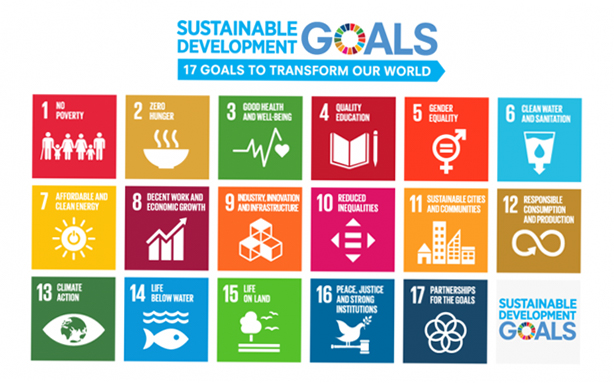
Figure 1: Goals of SDGs (Source: UN website)
2. Basic government policies on the LPG Industry
Besides the SDGs, the LPG industry operates in close conjunction with government policies. The Strategic Energy Plan, National Resilience Plan, Long-Term Strategy under the Paris Agreement, and the Strategy for Revolutionary Innovation of the Environment are essential policies which could affect the direction of the LPG industry’s future. Furthermore, it will be necessary for the industry to operate in line with the GOJ’s new concept of Society 5.0 where social structure would be formed by the digital transformation (DX) in an advanced society. Moreover, from the perspective of social responsibilities of business entities, it is also necessary to judge values through the lenses of Corporate Social Responsibility (CSR) and Environmental, Social, and Governance (ESG) factors.
3. Contributions of the LPG industry to achieving the SDGs
In this chapter, we identified four goals (i.e., 7,9,11 and 13) among the 17 SDGs, which the LPG industry is expected to tackle. Also, important tasks and action plans for achieving each goal are individually described.
3.1 SDG7: Reliable energy, LPG

7. Affordable and Clean Energy
Ensure access to affordable, reliable, sustainable and modern energy for all
〈Summary〉
Easy storable and transportable LPG is a decentralized energy source which can be used to construct an efficient and stable supply chain system with less capital cost. Also, Japan has established highly advanced and safety protection technologies, which are nowadays commonly available in East Asian countries. In addition to our continuous efforts towards stable energy supply, we will work for further utilization of renewable energy, including solar and wind power generation on top of the research into biomass, so as to contribute to realizing a low-carbon/decarbonized society.
1) Contributions by diversifying LPG supply sources and robust stockpiling/distribution infrastructure
Japan’s dependency on the Middle East countries stood at 85% of its LPG import in 2005. However, due to the start of shale gas fracking in the U.S., today approximately 80% of import are covered by the U.S. At the same time, various export projects are presently underway in Australia, Canada, Russia, to name but a few.
Considering the continued international tensions, and the risks associated with passing through the Straits of Hormuz, it is clear that Japan’s LPG imports have established a much higher diversification than crude oil which is still heavily reliant on supplies from the Middle East countries.
In contrast to the natural gas (LNG) imports which have no stockpile obligation system in Japan, LPG is designed to ensure stable supply in case of emergency through the joint efforts by the government and private sectors with 1.4 million tons in the national stockpile terminals (equivalent to 50 days usage) and 1.1 million tons in private stockpile terminals (equivalent to 40 days usage). In addition, LPG is stocked as a final product, which means LPG can be anytime used as it is without a need to be re-processed as opposed to crude oil.
Regarding the LPG distribution network, 29 import terminals and 39 secondary terminals now exist in Japan (JLPGA data), which completely supports the supply infrastructure. However, optimum logistics with a more efficient distribution network can be constructed across Japan in the future by further consolidations and inter-operations between import/secondary terminals in accordance with the development of IoT and AI technologies as envisioned by Society 5.0.
2) Global contributions through the development of LPG apparatus technologies and actions towards operational safety
Japan is a leading country in the field of effective energy-saving technologies and utilization of energy. In the LPG sector, Japan has achieved significant development of the actual use of highly efficient heaters, fuel cells, co-generation systems, gas heat pumps (GHP), etc., while keeping its efforts to develop LPG-related apparatus to ensure safety. In the energy field, including the LPG industry, Japan has achieved a unique development to protect the environment while strengthening safety measures and maintaining resilience through the joint efforts of the government and the private sectors.
The “Strategic Energy Plan” revised in July 2018 urged the LPG industry to take more positive actions towards further international contributions. In response to this, “LP Gas Seminar in Japan” has been held every year under the cooperation with the primary LPG-producing and consuming countries. Bearing three norms governing the Japanese LPG industry in mind (i.e., environment, safety and resilience), several Japanese LPG wholesalers have advanced their business activities, targeting positive cooperation and penetration in/with Southeast Asian countries. Also, production and sales of cassette-type gas stoves and cartridges, which have been widely used in Japan as an easy and safe application, are now in operation in China as well as the micro-computerized gas meters for safety appliances.
With regard to the international movements, the World LPG Association (herein after referred to as “the WLPGA”) is proactively working to make LPG widely available and affordable in developing countries. We, JLPGA, will support these activities and strengthen our cooperation with the WLPGA.
3) Activities towards renewable energy by the LPG industry
In the “LPG Vision in 2025 for LPG Industry” released by the JLPGA in 2018, we, JLPGA, expressed our idea to study how we should utilize renewable energy in the LPG arena, including future possible actions.
In addition, we had studied the following two possible action plans concerning the utilization of biomass energy in order to meet the law called “The Act on Sophisticated Methods of Energy Supply Structure” legislated in 2010:
i) Mixing liquid fuel into LPG (mixture of bio-fuel into LPG)
a) making use of bio-methanol for anti-freeze use, instead of using conventional methanol additive agent (up to 2,400 ppm) during the winter, or b) blending up to 9% of di-methyl-ether (DME), which is produced from bio-methanol and has similar characteristics to LPG, into LPG if further concentration of mixture is needed.
ii) Effective use of LPG for diversified-power generation fueled by biomass energy (mixture of LPG into bio-gas)
This study was made for the possible use of LPG for general-purposed power generation engine fueled by biomass on top of its possible use for horticulture. It requires mixing LPG into bio-gas in order to adjust and stabilize the calorific value of bio-gas which is produced from the process of fertilization and reforming of bio-materials such as wood. Nowadays, this activity has been left to the actions of private entities as a part of tools for LPG demand development.
Based on these methodologies, the JLPGA will proceed with further actions regarding the renewable energies, including solar and wind power generation. Also, we will explore innovative ways that the LPG industry should move forward in the future by strengthening cooperation with the government, industry and academia – such as research institutes and universities.
Regarding the international movements, especially in Europe, the WLPGA is conducting research on LPG bio-energy and issued “Bio LP Gas Report” in 2018, which summarized the global movement for bio-LPG production and consumption.
In the report, multiple issues were pointed out for addressing the further use of bio-energy such as how costs derived from mandating bio-fuel should be shared, possible destruction of nature due to manufacturing bio materials with using vegetable oil, and insufficient bio-LPG volume to cover; at most 2% of total LPG demand for the time being. However, the report also described that if advanced chemical processing technologies were to be developed, it could produce bio-LPG from waste, etc., and ultimately cover 30% of global LPG demand in the future.
Furthermore, in the report “The Role of LPG and bio-LPG in Europe” issued by the WLPGA in 2019, it came up with a practical approach in order to facilitate realizing decarbonization; switching petroleum-fueled equipment to that of LPG as a first step, and then to bio-LPG, while embracing a vison to ultimately switch half of global LPG consumption to bio-LPG (except for petrochemical use) by 2050. We will continue to pay close attention to this move and study whether this approach could be applicable to the Japanese LPG industry.
3.2 SDG9: Valuable energy of supporting our everyday life, LPG
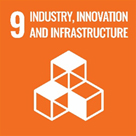
9. Industry, Innovation, and Infrastructure
Build resilient infrastructure, promote inclusive and sustainable industrialization, and aim to expand technological innovation
〈Summary〉
Introduction of innovative and prospective IoT/AI technologies will not only lead to maintaining and improving the resilient LPG logistics infrastructure, but also to creating high-value-added services and providing them for our clients. Furthermore, we will accelerate our efforts to develop new methodologies for manufacturing low-carbon/carbon-free LPG through innovative technologies, such as via artificial photosynthesis, bio-LPG synthesis, Propanation (synthetic propane production), etc. While existing power-grid networks are, to a great extent, forecast to be converted to a micro-grid power distribution system (local production and local consumption) in the future, we will strive to realize a society where LPG and electricity can smartly co-exist. Also, we will focus on introducing innovative technologies, enhancing daily use of emergency power generation units, and further diffusion of co-generation systems.
1) Introduction of IoT and AI technologies to maintain sustainable logistics
LPG is a decentralized energy and its distribution networks have been laid down across Japan. On the other hand, keeping and maintaining the existing distribution infrastructures requires labor-intensive maintenance costs as well as the manpower associated with it. There is a prospect that issues on manpower shortage, declining birthrate, aging population, and depopulation in rural areas will adversely affect every industry in the future. In order to maintain and to improve the existing LPG distribution system, it is necessary to adopt revolutionary and prospective innovations via IoT and AI as envisioned by “Society 5.0” in the highly sophisticated digital society.
Deregulation is also quite important. For example, allowing further implementation of RFID tags (IC tags) and other state-of-the-art devices will enable vendors to facilitate a collaboration among themselves through sharing relevant data via AI technology and optimizing a complicated distribution program while connecting LPG cylinders and/or delivery tools with computer networks.
The centralized LPG monitoring network has achieved a remarkable breakthrough and has shown a great operational performance due to progress in IoT technology in recent years. Thanks to the development of Low Power Wide Area (LPWA) technology and increased data density, various additional services for customers are expected to be added onto the existing core business (e.g., safety management or automated meter reading).
Expectations are high on further rationalization of the existing distribution system. By obtaining relevant data concerning distribution in real time in the future, information on procurement, production, transportation, and sales can be immediately processed via AI/IoT technology, which will enable distributors to optimize their supply chain and to promptly provide efficient services for customers located in less convenient places such as rural urban fringes, mountainous districts, and islands. Furthermore, in a country prone to natural disasters like Japan, it is an urgent task to secure distribution routes from base terminals in case of emergencies. From this point, efficient use of drones will be essential. As drones are considered to bring benefits to LPG industry regarding the rationalization of security management and so forth, further study on its effective use is required in order to make best use of the technologies relating to drones in a prompt manner.
As far as the LPG sales in the Japanese retail market is concerned, sales by gauging consumption volume which go through a gas meter attached to the cylinder is dominant (i.e., volume sales) as opposed to the way of sales by measuring a weight of a cylinder without using a gas meter (i.e., weight sales). However, there are high expectations for the expansion of the weight sales in order to meet a need for outdoor use, such as patio heaters, commercial BBQs, events, etc., as well as to meet a demand for emergency power generators in case of blackout when disaster happens. Therefore, we will seek more flexible and sustainable use of LPG by utilizing AI and IoT, while taking measures to prevent accidents incurred under the sales by weight.
2) Development of revolutionary technology towards a carbon-neutral society (Artificial photosynthesis, Propanation, etc.)
In 2016, Showa Shell Sekiyu K.K. issued a press release stating that they had succeeded in synthesizing methane and other hydrocarbons directly from water and CO2 with using artificial photosynthesis technology. As a result of using its own metal catalyst, Showa Shell explained that they were able to convert solar energy to hydrocarbon at 0.71 efficiency. In addition, it was reported in 2018 that Colombia University and Illinois University had succeeded in developing an artificial photosynthesis that could produce hydrocarbon fuels, including LPG, from CO2.
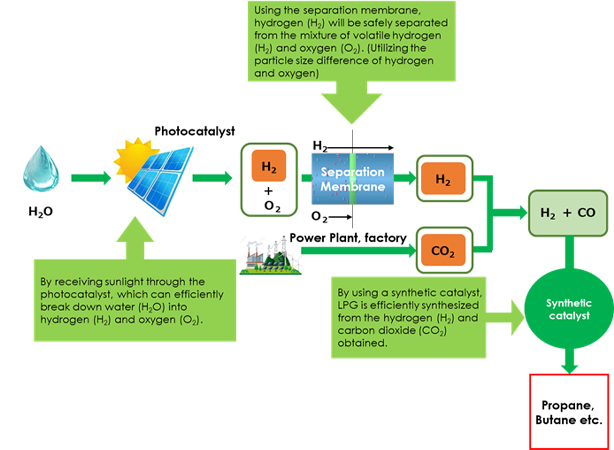
Figure 2: Updated image from the URL of Ministry of Economy, Trade and Industry (METI) based on artificial photosynthesis – Decarbonization technology to convert CO2 into Hydrocarbons
Two patents have been registered in Japan by the University of Kita-Kyushu since 2016. The first concerns a method of synthesizing methanol to yield hydrocarbons via the Fischer-Tropsch process, and the second concerns a method of producing hydrocarbons via additional catalytic reaction of methanol gained from the reaction of CO (carbon monoxide) or CO2 (carbon dioxide) and H2 (hydrogen). Thus, it can be said that the underlying technologies for producing LPG from bio materials have already been established.
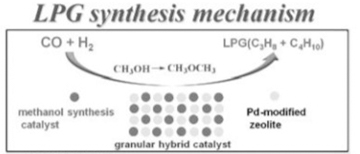
Figure 3: The scheme for LPG synthesis
(Source: Dissertation at Biomass Science Conference) *1
The Town gas industry in Japan has come up with a long-term environmental implementation plan with an emphasis on Methanation (synthetic methane production) technology. According to the plan, methane is to be produced by synthesizing recovered carbon dioxide and CO2-free hydrogen obtained by making use of surplus renewable electricity which would be widely available once the full-fledged implementation of renewable energy policy has been made in the future.
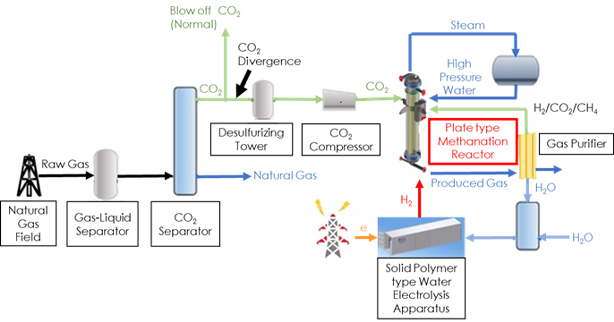
Figure 4: Methanation (Source: METI URL*2)
Since the innovative technologies to synthesize hydrocarbons have been already developed and specific research has been conducted, we will make efforts towards further development of innovative technologies which would enable us to manufacture LPG via artificial photosynthesis, bio feedstocks or synthesis reaction while utilizing CO2-free hydrogen and carbon dioxide (i.e., Propanation and Butanation) through the cooperation with the government, industry and academia. (This item is closely linked to the SDGs 7: the role of renewable energy.)
Besides, in order to realize a carbon-neutral society, it is important for all the industries concerned to cooperate towards utilizing technologies in the areas such as CO2 recovery and CO2-free hydrogen. However, an upcoming carbon-neutral society also needs to secure a stable energy infrastructure in preparation for disasters. Consequently, it is vital for all, including policy makers, to share an idea that LPG can perfectly co-exist with hydrogen as well as electricity in a carbon-neutral society by playing a role in backing them up with utilizing an advantage LPG has as a decentralized energy.
- *1 Selective Synthesis of Liquid Petroleum Gas from Biomass (Recycling of carbon dioxide), Kaoru FUJIMOTO, Congming LI, Xingdong YUAN, Kazuo YOSHINO, Takashiro MUROI
- *2 The new movement of global warming countermeasures, implementation of New Energy and Industrial Technology Development Organization (hereinafter ‘NEDO’, Methanation Technology)
3) Alliance with Decentralized Micro-grid System
Installation of Emergency Power Generators with LPG bulk supply system (Notes) can not only help continue supplying electricity in case of power outage, but also can support Decentralized Micro-grid System combined with a solar, wind, and bio-mass power generation as indicated in The Strategic Energy Plan. It is also expected that the LPG emergency power generators will work as a backup, should renewable energy generators fail to generate enough power.
If the Smart Management Operation System coupled with IoT and AI were to be applied to LPG-driven decentralized power generation (e.g., emergency power generator, cogeneration system), then it would become an effective solution to promote renewable energy-based Micro-Grid in light of the power supply chain’s localization. Therefore, we will address further study towards putting this idea into practice. (This issue is also closely tied to SDG7, the role of renewable energy.)
Utilizing electricity and heat yielded from LPG-powered CHP (Combined Heat Power) or GHPs is expected to contribute to materializing the concept of Compact City, which is a sustainable and efficient urban form advocated by the GOJ, where integrated public service, facilities and infrastructure are provided. This approach may also help to promote entities like “Stadtwerke”, which are the municipal-owned public utilities in German that provide electricity, gas and water and operate related infrastructures.
(Notes)
LPG bulk supply system
This is a filling supply system of LPG with a large storage (bulk) tank installed adjacent to the residential houses, condominium, and commercial buildings. This system is a substitution for traditional cylinder exchange system and the delivery to the tank is to be made by bulk lorry truck. Through transporting massive bulk quantities of LPG at a time, there are multiple benefits, such as realizing stable supply, rationalization of distribution, safety enhancement and improvement of exterior view, and so forth, according to the Conference of LP Gas Associated Organizations.
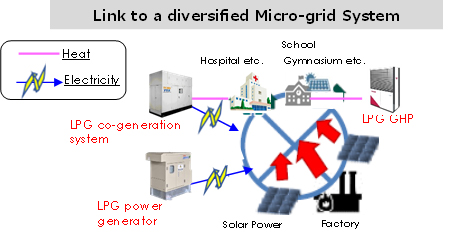
Figure 5: Conceptual scheme of Decentralized Micro-grid System where LPG could contribute(Source: JLPGA)
3.3 SDG11: Resilient infrastructure of LPG
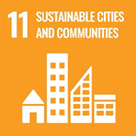
11. Sustainable Cities and Communities
Making towns and residences safe, strong and sustainable
〈Summary〉
Regardless of the degree of the SDGs achievement, natural disasters are inevitable, and the existing infrastructure could collapse without warning. Network-based energy is vulnerable once a large-scaled disaster happens. Therefore, it is important to enhance security measures in order to maintain and improve the energy supply stability by utilizing LPG, considering the fact that LPG is a decentralized and disaster-resilient energy. Disaster response capabilities can be significantly improved by installing LPG bulk supply systems in the right places, coupled with an installation of emergency power generator and GHP.
Also, in view of strengthening the transportation system’s resiliency, further promotion of Autogas vehicles will be necessary so as to mitigate the impact of gasoline and diesel oil supply shortages in case of disasters. In order to construct a robust and sustainable society, it is essential to have a decentralized energy source as an effective backup option, while pursuing a possibility where LPG and electricity can smartly co-exist.
1) Introduction of bulk storage system for disasters
A “disaster response LPG bulk supply system” comprises an LPG bulk storage tank, supply equipment (e.g., gas meters, gas hoses, pressure regulators) and consumption equipment (e.g., cooking caldrons, cooking stoves, space heaters, power generators). It is a stand-alone operation system designed to ensure a safe and swift LPG supply recovery even in a tough situation where a network-based electricity and/or town gas supply are disrupted by a large-scaled disaster, such as earthquake or tsunami. Fortunately, we are seeing growing numbers of installations of this system, backed by METI’s subsidy scheme.
Recently, LPG-fueled emergency power supply systems have proved to be very effective amid earthquakes, storms, and flood damages. Besides, upon reviewing the massive and fatal heatwaves experienced throughout the country in 2018, this bulk supply system, combined with a power generation for air-conditioning by GHP, has also started to be adopted by many school classrooms, gymnasiums (designated as evacuation shelters during disasters), nursing homes, etc. and the number of cases is increasing.
The fact that we are seeing a widespread increase in the use of emergency power generator and GHP, coupled with a bulk supply system, is clear evidence that illustrates the positive acknowledgement of LPG’s resilience capability by the public and private sectors. From the perspective that this system should be used as the most effective tool to strengthen resilience against disasters, we will continue our advocacy efforts.
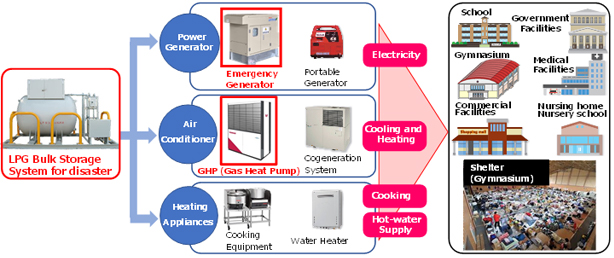
Figure 6: Disaster response of LPG disaster bulk system (Source: JLPGA)
It should be noted that 4.1billion yen (approx. 37million USD) of national budget was allocated in the fiscal year 2020 as a part of the national resilience policy, which represents an increase of 30% in comparison with that of 2019. In the fiscal year 2021, another 3.4billion yen budget (approx. 31million USD) was allocated. This fact shows that the important role of LPG as an effective resilience counter measure has been widely acknowledged by the government.
2) Promoting Installation of emergency power generators for everyday use
“Hokkaido Eastern Iburi Earthquake” in 2018 brought a wide-spread blackout for a couple of weeks as well as the disruption of town gas supplies across Hokkaido area. Also, Typhoon No,15 in 2019 brought a wide range of power losses caused by the disruption of power transmission networks. Even in those situations, however, LPG demonstrated its prowess as a decentralized energy source; LPG emergency power generators successfully continued providing heat and electricity in the areas where electricity and town gas supplies were cut off.
Although disasters are unpredictable, installation of LPG emergency power generator is a part of effective solutions to support a sustainable society. With this in mind, we will continue our promotional activities to realize nationwide installations of LPG emergency power generators coupled with the disaster bulk systems while strengthening our lobbying activities.
3) Promoting LPG-fueled GHP
In addition to the aforementioned measures for improving resiliency, LPG helps improve the school’s learning environment; air-condition systems powered by GHP can alleviate the heat of classroom even though outside temperatures exceed 35°C.
Also, by using GHP and emergency power generators together with bulk storage systems at shelters, it is possible to save precious lives that might otherwise be lost due to a disaster. In fact, lawmaker’s awareness, including municipalities, to introduce LPG-fueled GHP into elementary & junior high schools, which are designated as disaster shelters during an emergency, are rapidly growing by using METI’s disaster bulk related subsidy or Ministry of Internal Affairs & Communication’s budget in connection with disaster prevention and mitigation.
According to research conducted by the Ministry of Education, Culture, Sports, Science and Technology (MEXT) in September 2020, classrooms of public elementary & junior high schools with air-conditioning systems (including EHP) have already reached 93.0% across Japan. On the contrary, however, the rate for gymnasiums is still as low as 9.0%, notably LPG-fueled GHG systems (i.e., only 80 schools out of 36,000). Thus, the earliest and further installations to gymnasiums, which are designated as evacuation shelters during an emergency, are strongly required.
In summary, introduction of eco-friendly LPG-fueled GHP air conditioning systems into classrooms as well as into gymnasiums can improve not only the daily educational environment, but also can work as emergency power generators, particularly at gymnasiums designated as evacuation shelters during blackouts. Bearing these advantageous points LPG-fueled GHP have in mind, we will strengthen our efforts towards further promotions and installations of the system.
4) Promoting LPG (Autogas) vehicles
LPG is an excellent energy which has been provided for half of all the households in Japan, including depopulated areas and islands, and can safeguard people’s lives in case of disasters.
While details are described in the following chapter concerning the climate actions (3.4.4), resiliency of LPG vehicles against disasters can be mainly attributed to the feature of LPG as a decentralized energy. Thus, installation of emergency power generators at more Autogas refueling stations across Japan is required in light of constructing more robust infrastructures.
LPG taxis and LPG tanker trucks have successfully supported people’s lives even in a situation where serious shortfalls of gasoline and diesel oil supplies occurred by massive natural disasters such as the Great East Japan Earthquake in 2011, Hokkaido Eastern Iburi Earthquake in 2018, North Osaka Earthquake in 2019, and so forth. Considering the favorable perception bestowed to LPG both by the end-users and administrators, we will continue our efforts to promote LPG vehicles.
3.4 LPG’s actions towards global climate change
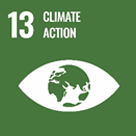
13. Climate Action
Taking urgent action against climate change and its impacts.
〈Summary〉
The number of cases to switch from petroleum and other sources to LPG are growing when replacing the home/commercial/industrial heating boilers and other equipment to more efficient ones, with taking LPG’s eco-friendly aspects into account; LPG is an environmentally excellent fuel with low CO2 emissions. LPG has also been used as a fuel for vehicles (Autogas) for more than a half century, with taking its advantage of less air pollutant feature on top of the low CO2 emissions.
Furthermore, it should be noted that expanding use for marine engine fuel is making progress in these days amid the tightening marine fuel regulations. Besides, it was found that LPG is an effective solution to control and eliminate the hydro-fluorocarbons (HFCs) to protect the ozone layer as well as to prevent the global warming. In order to contribute to achieving net-zero emissions by the LPG industry, we will also strengthen our approach to zero-energy houses and buildings (ZEH and ZEB).
1) Environmental contributions by promoting highly efficient heaters (Reduction of CO2 emissions)
Home-use LPG combustion equipment being used in Japan is highly efficient. Furthermore, latent heat recovery-type LPG water heater (i.e.,”Eco-Jozu”) can reduce CO2 emissions by 287 kg/year per unit (data source : Rinnai ).
According to the Fuel Cell Promotion Association, energy efficiency of home-use fuel cells cogeneration system (i.e., ENE-FARM), which supplies heat and power derived from gas/LPG, is 70-80% as opposed to 35-40% in case of conventional power generators. Also, transmission losses are remarkably small. In addition to making an effective use of electricity, primary energy consumption can be reduced by 23% with CO2 emissions being reduced by 1,330 kg/year which is equivalent to 38% reduction per annum. Recently, a new type of ENE FARM was released with a disaster-responsive functions. The new model can also generate electricity even during power-outage. We are promoting ENE FARM in order to realize an affluent society with enhanced disaster response capabilities in harmony with the environment.
The efficiency of GHP is also improving. According to our own data, GHP’s power consumption is about 1/10th (about 1/100th, if it has a power generation function) in comparison to electric air conditioners. Also, GHP is expected to cut peak power and play a key role in disaster response. With these points in mind, we will continue our efforts to actively promote LPG-fueled GHP.
2) LCI evaluation of LPG and fuel conversion
Environmental assessments on LPG were conducted as a part of the survey titled "Life cycle inventory analysis of fossil fuel energy in Japan" promoted by the Institute of Energy Economics, Japan (IEEJ) in 1999, as well as the "Greenhouse gas emission survey in kitchens, air conditioning, and power generation" by the Research Institute of Innovative Technology for the Earth (RITE).
In response to the aforementioned analysis, the JLPGA conducted a survey titled “Evaluation of environmental aspects of LPG-LCI (Life Cycle Inventory) analysis" in 2009 with a cooperation by the Nippon Institute of Technology so as to make our own environmental assessment on LPG. According to the analysis, LPG shows an excellent environmental performance as listed below (Table 1): the emissions factor of LPG is 65.71 g-CO2/MJ (73.98 for oil) and the index benchmarked on petroleum as 1.00 is 0.89. This numerical analysis has been widely referred when evaluating the LPG’s environmental aspects.
Table 1 CO2 emissions (LCI) including production and transportation stages
(Source: JLPGA)
| Emission factor(g-CO2/MJ) | Index | |
|---|---|---|
| Oil | 73.98 | 1.00 |
| Coal | 94.98 | 1.28 |
| LNG | 61.57 | 0.83 |
| City gas | 62.95 | 0.85 |
| LPG | 65.71 | 0.89 |
Taking the exceptional benefits of LPG into account, LPG is often preferably selected not only for residential use but also for industrial use by entities which put emphasis on the environment when considering to switch from oil-based fuels.
Particularly, with regard to the usage for boilers and furnace fuels in industrial sectors, fuel conversion from heavy fuel oil (CFO) to LPG is rapidly progressing. This fact demonstrates that increasing numbers of industrial customers recognize that reducing greenhouse gas (GHG) emissions is a social obligation and LPG is an effective solution to contribute to the environment.
For example, according to the latest information obtained by the JLPGA and Nikkan Kogyo Shimbun (Daily Industry Press), a food manufacturer in Mie Prefecture decided to switch from the light heavy fuel oil boilers that they had been using until June 2019 to LPG boilers. There were several reasons behind their decision: improving safety, reducing maintenance work or lightening the burdens of fuel stock control. The biggest reason, however, to switch was that LPG provided them with a sense of security and environmental friendliness.
Please refer to the website below for the examples of fuel conversion.
http://www.j-lpgas.gr.jp/nenten/index.html (Japan LP Gas Association website)
https://newswitch.jp/p/19021 (Nikkan Kogyo Shimbun: New Switch website)
3) LPG fueled vessels
Since 2020, the International Maritime Organization (IMO) has strengthened regulations on sulfur content in ship fuel from 3.5% to max 0.5%, and its compliance is urgent. In order to reduce the sulfur content, three options are now being indicated: switching to the use of ultra-low sulfur oil (compliant oil), fitting a scrubber device, or switching to LNG-fueled vessels. At present, switching to costly compliant oil is considered as the immediate response, but the burden of fuel costs will have a large impact on the global economy.
Over 200 LNG-fueled vessels are already in service, while LPG-fueled vessels are still at the development stage. However, there is almost no difference between LNG and LPG on the aspect of environmental performance: SOx emissions are reduced by 90-97%, CO2 emissions are reduced by 20% (LNG: 23%) compared to heavy fuel oil, while NOx reduction rate can be expected to be almost equal to that of LNG. In addition, LPG is easier to handle than LNG in light of the boiling point (i.e., minus 42°C (propane) versus LNG’s minus 167°C). Also, LPG-fueled vessels have another big advantage: existing infrastructure can be used for bunkering when supplying bunker fuel.
In Japan, Kawasaki Heavy Industry is leading a development of newly-built LPG-fueled vessels as shown in Fig. 7, and more than 40 large LPG carriers (VLGC) with LPG-fueled main engines have already been ordered to be newly built or retrofitted as of February 2021.
Considering that IMO regulations will extend to GHG emissions in the near future, adopting LPG-fueled engines not only to LPG carrier but also to commercial ships, including small and medium-sized ones, are strongly expected, although several technical issues have remained to be resolves. We will continue watching the development of LPG-fueled vessels while maintaining close cooperation with the related organizations.
In addition to the aforementioned damage to the atmosphere, adopting a seawater “open loop” scrubber system that dumps wastewater as-is into the seawater after desulfurization has another problem as far as the protection of the marine environment. In fact, many countries are apprehensive that this is dumping pollutants directly into the territorial waters. If LPG-fueled vessels are adopted, instead, those concerns over marine pollution, including bunker oil spills and drainage problems, will be mitigated, thereby leading to a contribution to the SDG14 (conserve and sustain the ocean, seas and marine resources), in addition to the SDG13.
Figure 7: LPG vessels (Source: JLPGA)
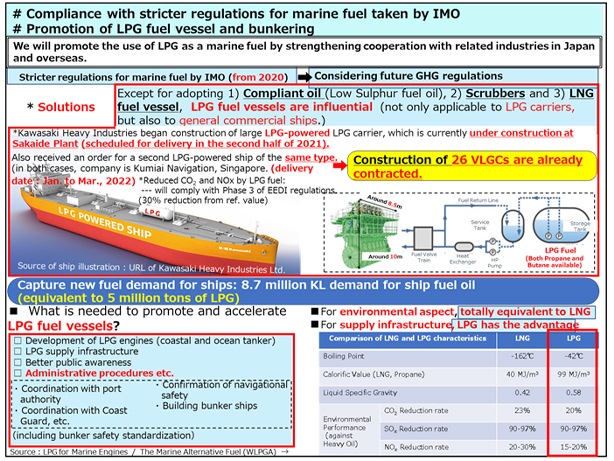
4) LPG (Autogas) vehicles
Autogas vehicles began full-scale production in 1961 and became popular mainly for the use of taxis. As indicated by the CO2 emission factor in section 2) of this chapter, LPG affords superior environmental performance to petroleum-based fuels (gasoline or diesel oil) and contains less sulfur. Therefore, it is safe to say that LPG vehicles with less SOx and NOx, emissions in comparison with the petroleum-based engine contribute to reducing CO2 emissions and improving air quality in the transport sector. In addition to the use for taxi and passenger cars, LPG vehicles are being used as LPG cylinder delivery trucks and commercial vehicles, which are centered on the “core LPG filling stations” in line with the government policy, to improve Autogas supplying networks. New moves are also in progress, such as the introduction of retrofitted LPG commercial vehicles that come with portable Autogas dispense system.
Countries in Europe such as the U.K. and France regulate the entry of diesel vehicles and old-fashioned internal combustion engine (ICE) vehicles in major cities, while LPG vehicles are not subject to such regulations.
LPG consumption by Autogas vehicles worldwide stood at 27,211 thousand tons in 2019 (8% of total LPG consumption) and the total number of Autogas vehicles was 27,749 thousand with 81,474 auto gas stations, according to the WLPGA. On the other hand, Autogas consumption in Japan during the same period was 773 thousand tons/year and the total number of Autogas vehicles was193,000 with 1,396 auto gas stations. It would be safe to say that Japan is a relatively advanced country in terms of Autogas vehicle’s utilization.
Also, using Autogas vehicles for delivery trucks purpose as well as for the commercial use is quite effective from the standpoint of securing supply sustainability as described in 3.4); we can utilize the stockpiles in the tank of delivery terminals by directly refueling Autogas vehicles at the site during emergencies. In addition, a new model of LPG hybrid vehicle for taxis (JPN TAXI) was released by Toyota Motor Corp. in 2017, and we can now see the model running in every city in Japan. The dissemination of LPG hybrid car is now a global phenomenon and studies are reportedly underway towards introducing LPG hybrid cars in countries with high LPG quality control capabilities. On the other hand, the number of Autogas vehicles (including taxi and truck use) in Japan is continuously declining due to lack of public relations activities, limited new models, shrinking Autogas refueling station networks, and so forth. We need to consider countermeasures so as to stop this negative trend.
5) Elimination of Hydro-fluorocarbons (HFCs)
Under the “Long-term Strategy based on the Paris Agreement”, which was adopted by the Cabinet Council in June 2019 and became an international commitment, “abolition of hydro-fluorocarbons (HFCs)” is an important issue for Japan in terms of not only ozone layer protection, but also climate change countermeasures. Recognizing this, it clearly stated that measures should be taken in accordance with the international frameworks as well as the internal laws and regulations, and the movement to use natural refrigerants is rapidly proceeding. Although LPG (propane, butane) is a hydrocarbon fuel, it has a low greenhouse effect and is quite effective in controlling and eliminating hydrofluorocarbons (HFCs).
For the use of refrigerant, LPG has already been used in home appliances such as refrigerators, and research on whether it is possible to substitute the hydro-fluorocarbons (HFCs) with LPG and use without purging HFCs has been conducted mainly in Southeast Asia. If innovative technologies are developed, it is expected that the role LPG can play in the area of eliminating HFCs will greatly advance and that the environmental contributions of LPG will be enhanced. Thus, further study on disseminating LPG for the use of refrigerant is required.
6) Approaches to net-zero-emissions by LPG
LPG is a primary energy source produced mainly by gas-producing countries, followed by refineries or chemical plants, which accounts for roughly 20% of total LPG supply in Japan. Although it is an undeniable fact that LPG emits CO2 due to its nature as a fossil fuel, LPG industry can contribute towards net zero emissions through the voluntary actions taken by everyone involved in the LPG industry to work on steady energy-saving in line with the approach expressed in this report.
In the "4th Strategic Energy Plan" adopted by the Cabinet Council in April 2014, it is stated that the GOJ should aim to achieve ZEB (net Zero Energy Building) [1], on the average, in newly-constructed public and private buildings by 2030.
ZEB is a building with an annual net primary energy (fossil fuel) consumption around zero (or less) by combining the following measures for self-sufficient energy. (N.B., This section is also closely related to the role of SDG7 for renewable energy and the role of SDG9 for microgrids.)
Energy saving of building structures and equipment
Utilization of renewable and unused energy
Effective and mutually-supportive use of energy within a region
As the first step for the LPG industry to contribute to achieving net-zero emission by means of ZEB and/or ZEH (Net Zero Energy House) [2], following measures should be incorporated to address the issue;
energy-saving / introduction of high-efficient equipment (e.g., GHP, LED lighting)
reduction of energy consumption (e.g., solar shading, heat insulation improvement)
introduction of renewable energy (e.g., solar power generation, biomass power generation)
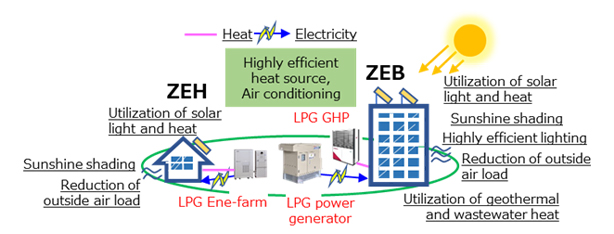
Figure 8: Conceptual diagram of ZEH/ZEB (Source: JLPGA)
(Notes)
1 ZEH: Net Zero Energy House
ZEH is a house with a goal to make annual net primary energy consumption around zero by saving as much energy as possible while maintaining a comfortable indoor environmental quality. This can be achieved through heat insulation, highly efficient equipment, and introducing renewable energy.
2 ZEB: Net Zero Energy Building
ZEB is a building with a goal to make annual net primary energy consumption around zero by saving as much energy as possible while maintaining a comfortable indoor environmental quality. This can be achieved by controlling the energy load through an advanced architectural design, actively using natural energy with an adoption of “passive” technology, introducing highly efficient equipment, and renewable energy to raise energy independency to the utmost.


